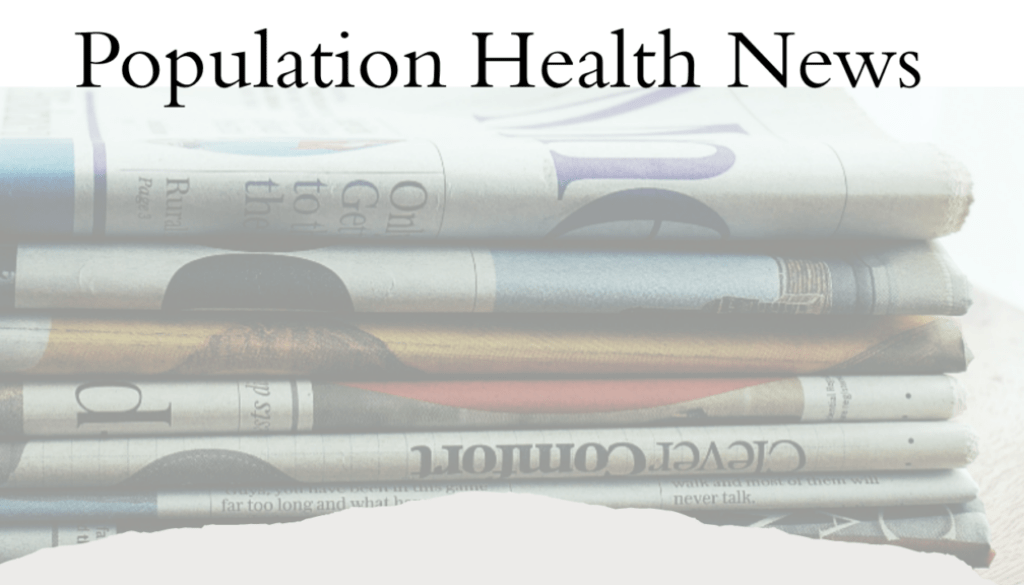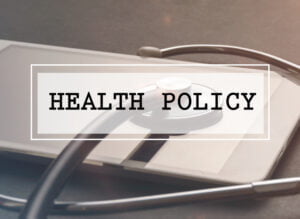Population Health News Roundup: October 2022
JoAnne DyerIAPHS Members in the News
Sandro Galea with Sarah C. Dupont in NEJM: “We believe the primary objective of public health institutions during a pandemic — after the early crisis stage has passed — should be to provide data and decision-making frameworks that local partners can use in diverse contexts to weigh various trade-offs.” (September 8, 2022)
Rita Hamad in Health & Place: Black kids who lived in segregated neighborhoods experience worse health and increased smoking, alcohol use, and obesity as adults. (September 2022)
Christy Irving in Society and Mental Health: “Study results suggest that sociological stress research underestimates the influence of stress on black women’s health when intersectional stressors like GRMS [gendered racial microaggressions] are not included in analytic models.” (August 29, 2022)
Danielle Rhubart in Socius: Sociological Research for a Dynamic World: “Third places” provide physical spaces for social interaction and support, but there are disparities in the availability of third spaces, suggesting the “value of conceptualizing and measuring third places to understand sociospatial disparities in the availability of these understudied opportunity structures.” (April 2022)
David Dzewaltowski presented at the CHRI Health Service, Policy & Population Health Mini Research Summit: “Community and child population health: Wellscapes rural community randomized trial effectiveness and implementation outcomes.” (July 20, 2022; video available here)
Health Disparities
Breast cancer screening and the digital divide: Access to online healthcare scheduling is not equally available. Only 18% of respondents in this study used a computer to schedule an appointment, and these women tended to be younger, more educated, White, and in a higher income bracket. (Radiology Business citing an August 30, 2022 study in Radiology)
Even vicarious exposure to discrimination is harmful: In middle-aged and older Black adults, vicarious experiences of major discrimination were associated with higher levels of depressive symptoms. (Aging & Mental Health, August 11, 2022)
Decades of life expectancy progress is gone in America: With COVID-19 and overdose deaths, America has lost 26 years’ worth of progress on life expectancy. Racial and ethnic groups experienced worse declines, especially Native American and Alaska Native groups, with 6.6 years lost. (Scientific American, October 17, 2022)
Environmental Health & Justice
Indigenous communities experiencing more wildfires and smoke: Not seeing enough help from the federal government, some tribes are installing their own air monitors. More help is needed, such as air filters. (Grist, August 24, 2022)
Map shows Washington State’s environmental and other health disparities: The map ranks environmental health exposures such as diesel pollution, hazardous waste proximity, and lead exposure, and includes other factors like socioeconomic and sensitive population data for areas across the state. (Washington State Department of Health, updated in August 2022)
Built Environments
Green space and trees can protect cities from climate change: Buildng new housing can deplete greenspace, which “leads to increases in urban heat and flooding.” Heat related illness and death can also result. (The Conversation, September 5, 2022)
Calls are growing to make New York City’s basement apartments safer: Below-ground apartments in NYC are often home to people in lower incomes and immigrants, and these apartments face increased risk of floods, fire, poor ventilation, and carbon monoxide poisoning. Efforts are underway to make these spaces safer. (Bloomberg CityLab, September 1, 2022)
Health Policies & Programs
Incarcerated older adults and COVID-19 deaths: Older adults in California correctional facilities experienced an increased risk for adverse COVID-19 outcomes and disproportionate rates of COVID-related death, even though “a smaller percentage of older adults than younger adults were released from prison during the pandemic.” The authors recommend that these differential rates of morbidity and mortality be considered in future response strategies. (HealthAffairs, August 2022)
Oregon Health Sciences University tackles care for unhoused people: As an “offshoot of a class on population health,” the OHSU School of Nursing’s Street Nursing Team is offering care such as foot soaks, telehealth help, and naloxone education to people experiencing homelessness. Scholarships will be offered to students interested in serving unhoused populations. (OHSU News, September 6, 2022)










All comments will be reviewed and posted if substantive and of general interest to IAPHS readers.